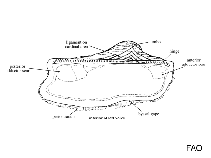Acar plicata (Dillwyn, 1817)
Warning: DOMDocument::load(): SSL operation failed with code 1. OpenSSL Error messages: error:140770FC:SSL routines:SSL23_GET_SERVER_HELLO:unknown protocol in C:\Apache24\htdocs\includes\SpeciesSummary.lib.php on line 1236
Warning: DOMDocument::load(): Failed to enable crypto in C:\Apache24\htdocs\includes\SpeciesSummary.lib.php on line 1236
Warning: DOMDocument::load(https://sealifebase.nrm.se/webservice/AquaMaps/getAMap.php?genus=Acar&species=plicata): failed to open stream: operation failed in C:\Apache24\htdocs\includes\SpeciesSummary.lib.php on line 1236
Warning: DOMDocument::load(): I/O warning : failed to load external entity "https://sealifebase.nrm.se/webservice/AquaMaps/getAMap.php?genus=Acar&species=plicata" in C:\Apache24\htdocs\includes\SpeciesSummary.lib.php on line 1236
Mandar um arquivo com seu (sua) Fotos
Imagem do Google | No image available for this species;
drawing shows typical species in Arcidae.
Imagem do Google | No image available for this species;
drawing shows typical species in Arcidae.
Classification / Names Common names | Synonyms | CoL | ITIS | WoRMS
| Arcida | Arcidae
Environment: milieu / climate zone / depth range / distribution range Ecologia
; intervalo de profundidade 0 - 150 m (Ref. 93550), usually 0 - 50 m (Ref. 75831). Tropical
Distribuição Países | Áreas FAO | Ecossistemas | Ocorrências | Introduções
Indo-Pacific and the Mediterranean Sea. Tropical and subtropical.
Length at first maturity / Tamanho / Peso / Idade
Maturity: Lm ? range ? - ? cm Max length : 0.4 cm TL macho/indeterminado; (Ref. 2922)
Found in low tidal to 130 m in crevices and stones; dead specimens to 274 m (Ref. 337); also intertidal on rocks and coral (Ref. 75831). Commonly attached via strong byssal threads to the undersides of rock slabs and boulders in the lower eulittoral subzone and to dead coral and rocks in the shallow subtidal (Ref. 102838). Also found on fine gray sand (Ref. 77792). Reported from Hong Kong to be found on the ceilings and walls of submarine caves (Ref. 126058).
Life cycle and mating behavior Maturidade | Reprodução | Desova | Ovos | Fecundidade | Larvas
Members of the class Bivalvia are mostly gonochoric, some are protandric hermaphrodites. Life cycle: Embryos develop into free-swimming trocophore larvae, succeeded by the bivalve veliger, resembling a miniature clam.
Referência principal
Referências | Coordenador | Colaboradores
Raines, B. and M. Huber. 2012. (Ref. 93550)
Status na Lista Vermelha da IUCN (Ref. 130435)
Status no CITES (Ref. 108899)
Not Evaluated
CMS (Ref. 116361)
Not Evaluated
Perigo para os humanos
Harmless
Uso pelos humanos
| FishSource |
Ferramentas
Mais informação
Idade/Tamanho
Crescimento
Comprimento-peso
Comprimento-comprimento
Morfologia
Larvas
Abundância
Crescimento
Comprimento-peso
Comprimento-comprimento
Morfologia
Larvas
Abundância
Fontes da internet
BHL | BOLD Systems | CISTI | DiscoverLife | FAO(Publication : search) | Fishipedia | GenBank (genoma, nucleotídeo) | GloBI | Gomexsi | Google Books | Google Scholar | Google | PubMed | Árvore da vida | Wikipedia (Ir para, procura) | Registro zoológico
Estimates based on models
Preferred temperature
(Ref. 115969): 21.2 - 29, mean 27.4 (based on 1826 cells).



